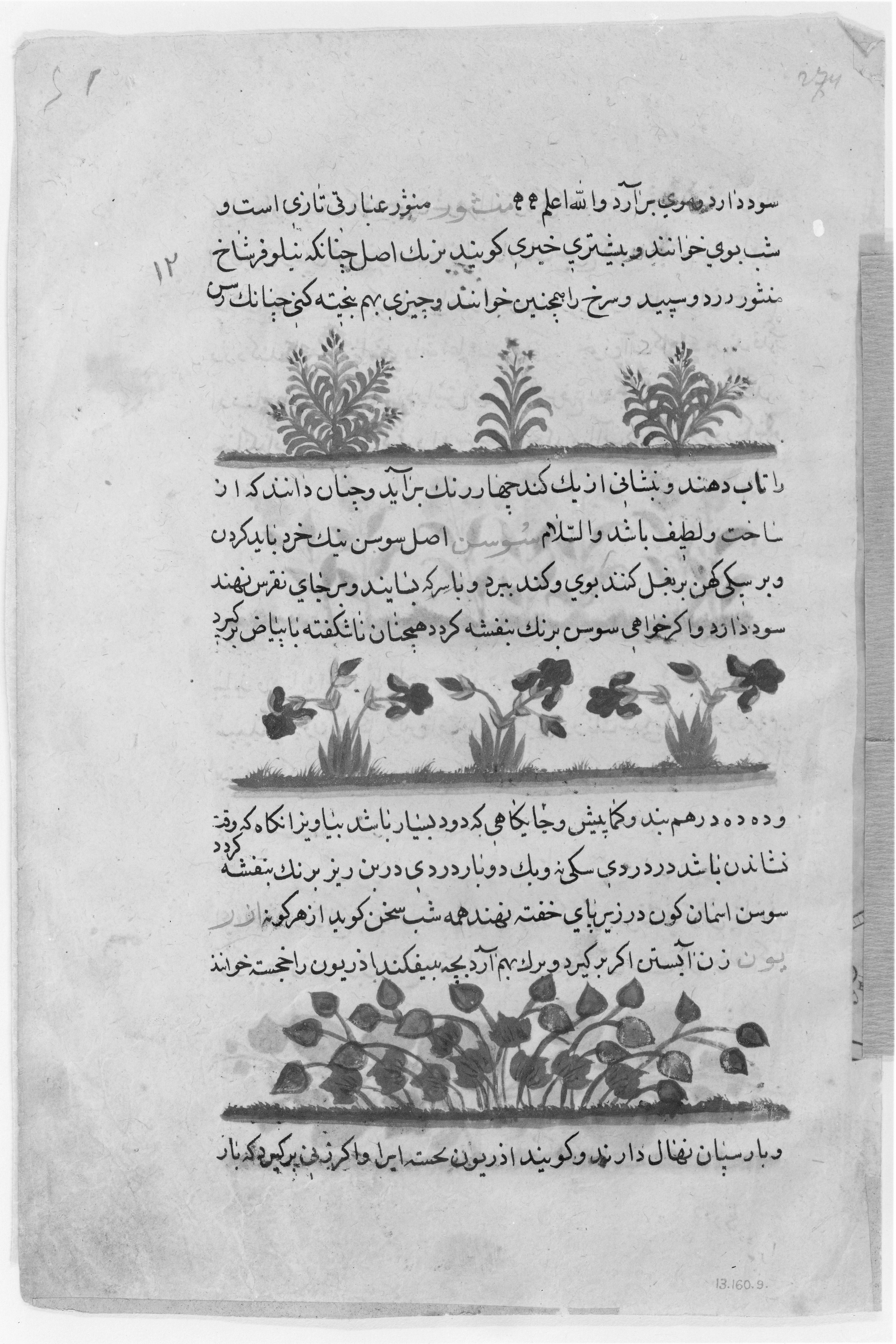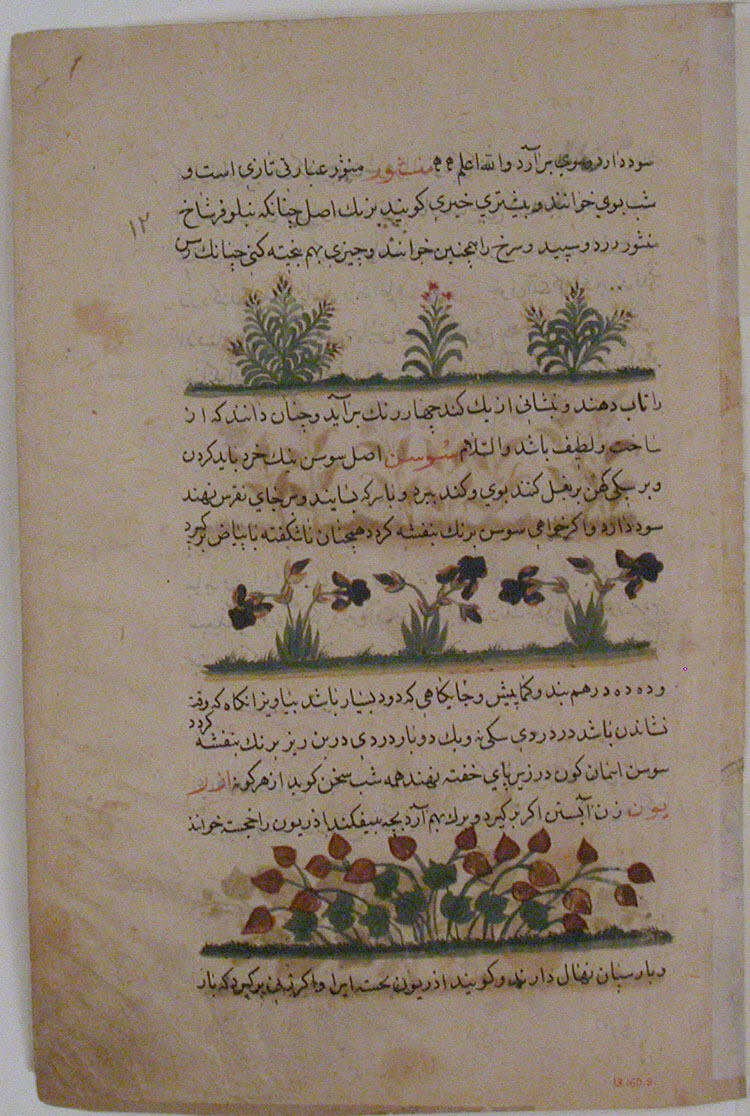"Purple Amaranth and Watermelon", Folio from a Dispersed Nuzhatnama-i ‘Ala’i of Shahmardan ibn Abi’l Khayr
Author Shamardan ibn Abi 'l Khayr Iranian
Not on view
The encyclopaedic text from which this page comes was written between 1095 and 1119 and consists of two parts, one devoted to the three kingdoms of nature, including humans, animals, agriculture and minerals and the other to various sciences and pseudosciences. Nineteen folios with thirty-three images are extant and widely dispersed in museums in Europe and North America. The illustrations of animals are characterized by the absence of marginal rulings and a horizon line. The paintings of plants, on the other hand, mostly include a ground line out of which the plants grow. On this verso of this folio the painting of the purple amaranths in full bloom appears at the end of the sixth part of the fifth chapter while the seventh part begins with the watermelon. The recto contains images of hesperis tristis, iris, and anemone. Although the manuscript can be dated to the late sixteenth or early seventeenth century, the absence of the calligraphic line defining contours characteristic of Isfahan works on the one hand and the dearth of closely comparable images from other schools on the other make the assignment of the manuscript to a specific place of production untenable.
This image cannot be enlarged, viewed at full screen, or downloaded.
This artwork is meant to be viewed from right to left. Scroll left to view more.





